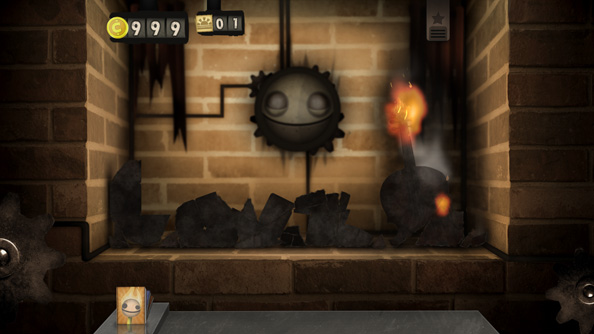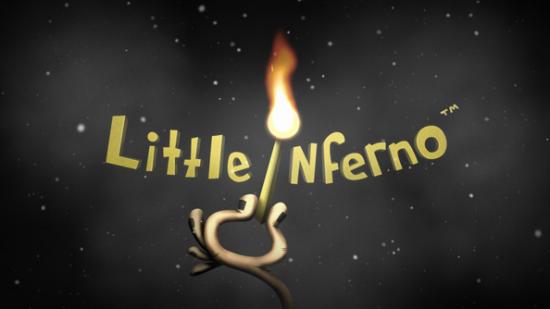Little Inferno is a game about burning all of your belongings in a fireplace. Actually, beyond a few combos to unlock, Little Inferno is barely even a game. But it’s definitely a thing about burning all of your belongings in a fireplace. You get coins for burning all of your belongings in a fireplace, with which you can purchase new belongings (for burning in a fireplace). Sometimes other people will send you letters, which you can also burn. It all goes up the chimney and you can’t look away. And it’s getting colder outside. And nobody knows why.
Little Inferno features an impressively realistic, two-dimensional fire-physics engine. You drag things from your thing-bar at the bottom of the screen and place them within the brickwork of your Little Inferno fireplace. Clicking anywhere in the fireplace strikes an invisible match beneath your cursor, igniting a small flame that you can drag around the fireplace and across the things you’d like to burn.
The first thing you burn in Little Inferno is your Little Inferno welcome guide and instruction manual. This is how I burned it. This is how I like to burn the letters I’m sent in the game. I hold the flame very close to the paper’s edge, not close enough to set it alight but close enough that the heat of the flame begins to char the thick, dry card of the envelope and the first wisps of dirty smoke coil and slither upwards along unseen eddies created by the heat of the flame and the draught of the flue.
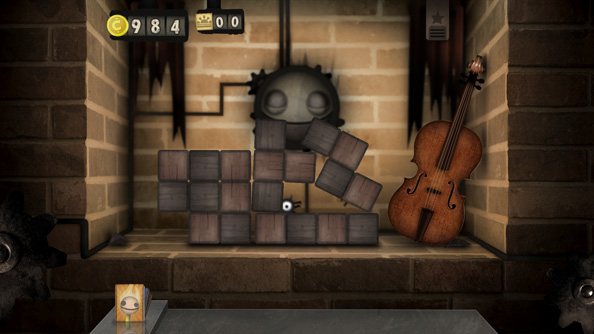
When the paper can no longer stand the heat it very quietly ignites, a dull, red and faintly visible halo of combustion along one edge, that soundlessly creeps along the creased and blackened perimeter of the singed letter. You can let go of the mouse button now, and extinguish your own flame, because the letter is lit and no longer under your control. The flame grows and spreads quickly across the face of the envelope, which causes the screen to darken and the colour balance to shift as the virtual camera struggles to properly expose the intense brightness of the little fire you’ve started. The bricks above the tiny papery effigy shimmer in the hot air as the thing turns to ash. It looks hot, it sounds like burning and you feel warm.
You can pick up the clumps of ash and play with them. Ash is soft and sooty and not as much fun as fire and it crumbles very easily. In the dying embers you’ll find coins and special tokens.
The coin you receive from a burnt object is worth more than the object itself — so you can never run out of things to burn — and can be spent in the first of many catalogues you unlock as you “progress”. The sort of things you burn range from dolls, toys, batteries, radios, wooden blocks and photographs of half-remembered people, to stranger objects such as screaming schoolbuses, tiny galaxies with their own gravitational pull, dry ice, a moustache, an iPad and an old Game & Watch. Unlocking new things to burn and then watching how they burn — they all react to the flames in different ways, exploding, whirring into life, bursting out their molten contents — is part of Little Inferno’s appeal. So I won’t list any more.
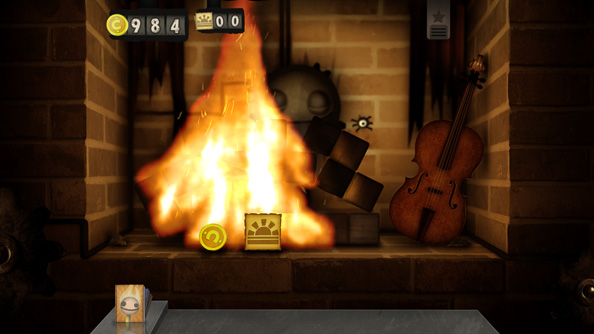
The most game-y aspect of the game is the checklist of secret item combinations to unlock. The ‘Movie Night’ combo is unlocked by burning a TV and an ear of corn. The ‘Lenders’ combo is achieved by burning a credit card and a model of a bank. You’re only given the name of the combo, which can be quite cryptic, to work out which items need to be set alight, and unlocking catalogues requires that you discover a number of these combos.
Tempering the rate at which you can burn your belongings is the time it takes for each item from the catalogue to be delivered. The tokens you sometimes find after burning something can be used to speed up this delivery time, though it’s never crucial that you receive your delivery sooner rather than later. You can just wait.
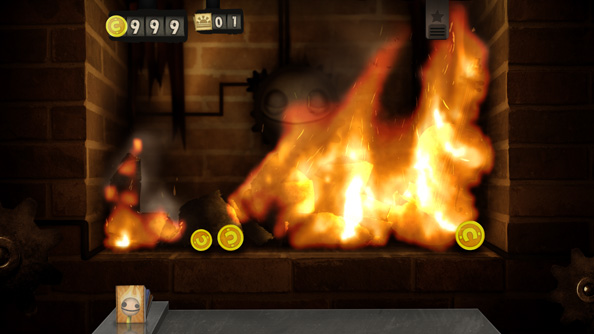
Little Inferno feels very close to itchy pointlessness, but there is a story ticking away somewhere behind your unblinking eyes, outside your door and in the sky above your chimney. It’s told through the letters you receive and burn, as well as in some different ways. There are also some strong themes, if you’re into themes: anti-consumerism is one, writ obvious as you flick through shopping catalogues to upbeat, earwormy 1950s easy listening tunes. But there are others to do with how we consume media, things like that.
There’s also more writing here (or at least there seems to be)than in the similarly styled and themed World of Goo (the co-creator of which, Kyle Gabler,forms one part of Little Inferno developer Tomorrow Corporation). Combined with a beautiful and darkly moving score, it creates a sense of a sinister and faintly tragic world existing beyond your fireplace. That mooddevelops as you work your way through the catalogues, and the game does have a properending a few hours into it.
Mostly, though, Little Inferno is simply a game about burning all of your belongings in afireplace. Personally, I couldn’t stop playing until I’d burned all of my belongings in a fireplace.It’s available now for $15, which is, at the time of writing, only £9.43.
I give it YES percent out of 10.
